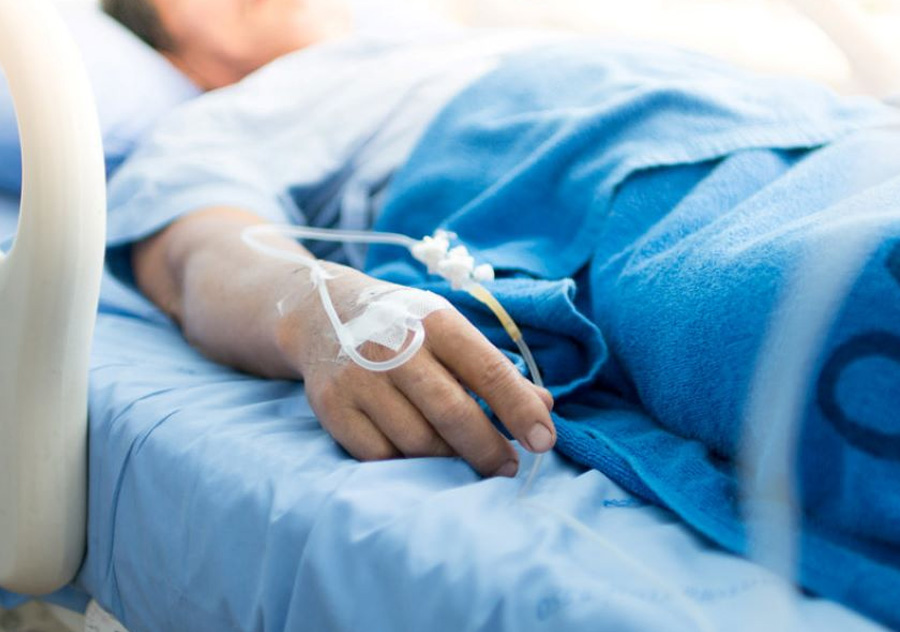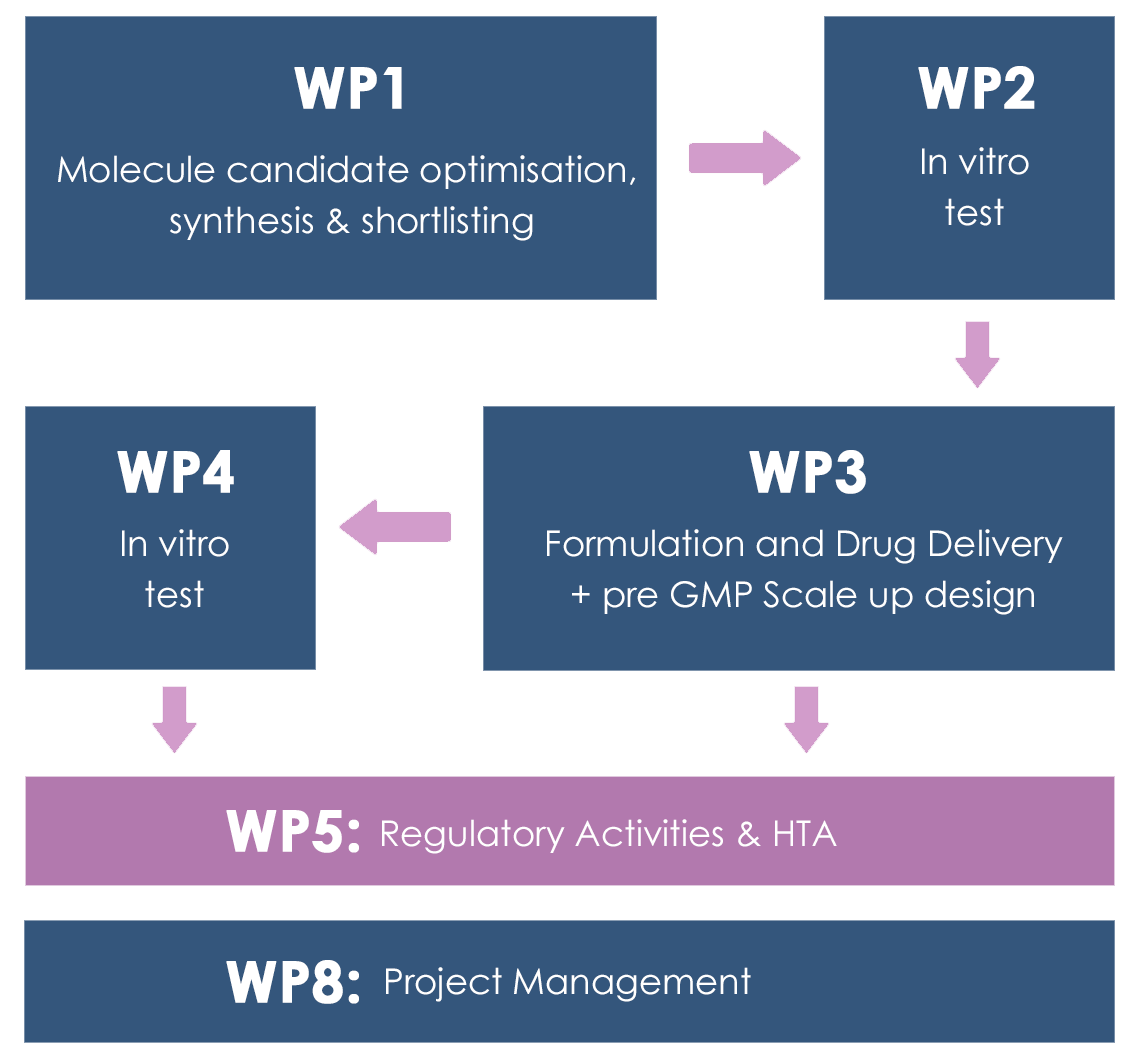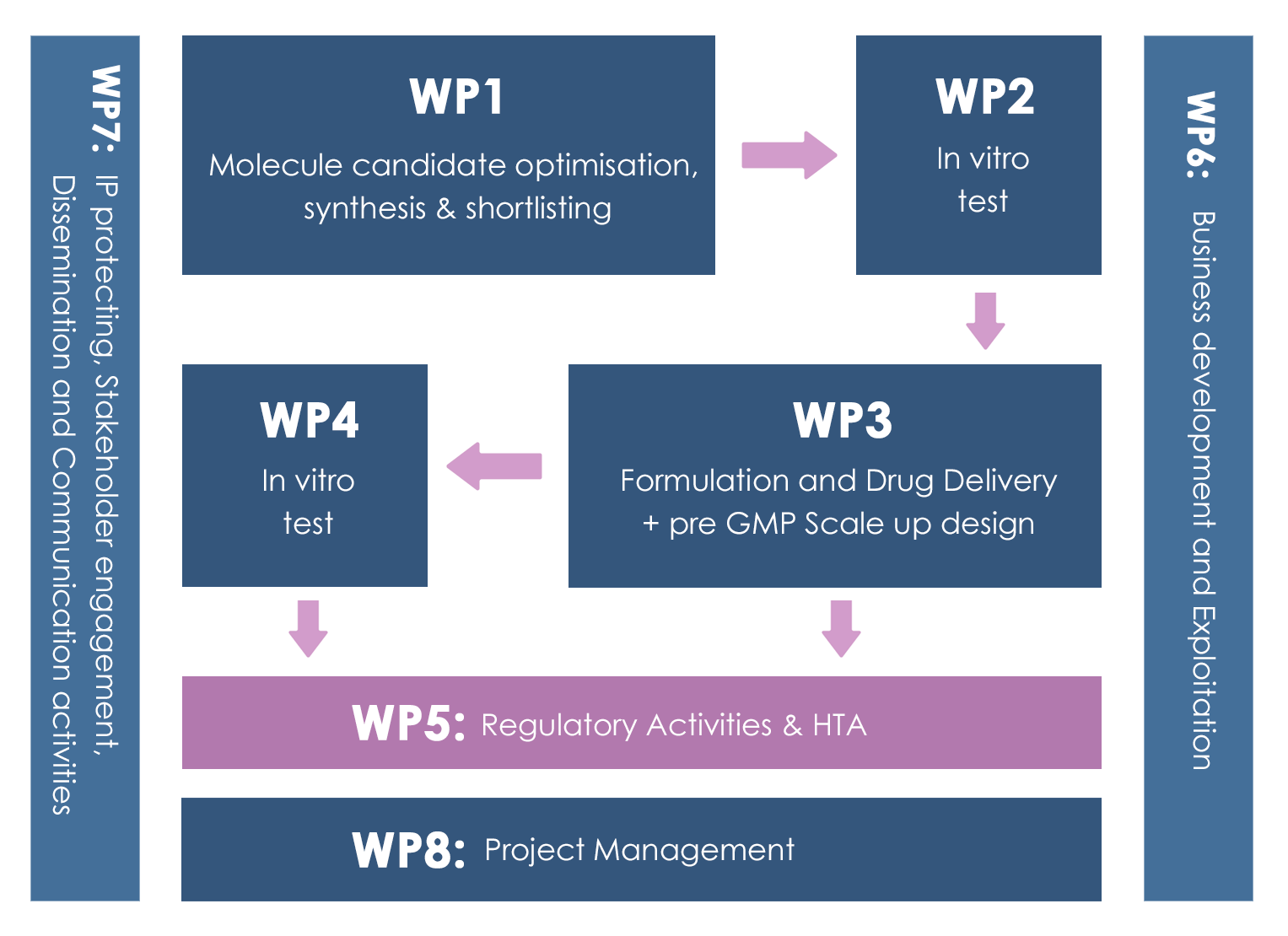The Problem
Antimicrobial resistance (AMR) and multi-drug resistance, whereby pathogens evolve to resist antibiotic drugs, is designated by the World Health Organization (WHO) as a top 10 health threat of our time.
AMR is already a high burden disease and was the third leading cause of death compared with all underlying causes of death in the global burden of disease (GBD) in 2019.

Systemic antibiotics
Only 17 New systemic antibiotics have been approved by the FDA since 2010.
Resistant infections
75% of drug resistant infections in the EU result in hospitalization.


4.95Mndeaths
Estimated 4.95Mndeaths worldwide associated with AMR in 2019, including 1.27Mn directly attributable to AMR.
Healthcare costs
AMR currently costs EU €1.5Bn/year in extra healthcare and productivity loss.

The Problem
Antimicrobial resistance (AMR) and multi-drug resistance, whereby pathogens evolve to resist antibiotic drugs, is designated by the World Health Organization (WHO) as a top 10 health threat of our time.
AMR is already a high burden disease and was the third leading cause of death compared with all underlying causes of death in the global burden of disease (GBD) in 2019.

Systemic antibiotics
Only 17 New systemic antibiotics have been approved by the FDA since 2010.

Resistant infections
75% of drug resistant infections in the EU result in hospitalization.

4.95Mndeaths
Estimated 4.95Mndeaths worldwide associated with AMR in 2019, including 1.27Mn directly attributable to AMR.

Healthcare costs
AMR currently costs EU €1.5Bn/year in extra healthcare and productivity loss.
The Project
IN-ARMOR is a granted project by the European Health and Digital Executive Agency (HADEA) under HORIZON-HLTH-2022-DISEASE-06-two-stage call. Its target objective is to introduce a novel class of immune system inducers able to enhance the body’s own innate microbial defense mechanisms to combat antimicrobial resistance (AMR) and reduce the incidence of the 13 listed most dangerous infections (including 2 of the top 3 priority-1 infections).
IN-ARMOR will optimize an already developed drug platform using Computer Aided Drug Design, and in-silico approaches, in tandem with a nanotech-based drug delivery system for the first target indication. The developed therapy will be pre-clinically validated for safety and efficacy in-vitro and in vivo to complete all Investigational Medicinal Product requirements.
Upon completion, IN-ARMOR will be prepared for clinical validation. Upon commercialization, IN-ARMOR could potentially save more than 4Mn lives worldwide and result in the significant burden reduction of antibiotic development with long-term cost reduction impact of €107Bn, whilst reducing the global disease burden by 96.84Mn DALYs (total disease burden -enteric infections in 2019 in Disability-Adjusted Life Years-DALYs).
The project is organized into 8 complementary work packages (figure below) to accomplish the goal of optimizing APD and ultimately exploiting them as an alternative to antibiotics to treat infections and inflammation processes.
The project is organized into 8 complementary work packages (figure below) to accomplish the goal of optimizing APD and ultimately exploiting them as an alternative to antibiotics to treat infections and inflammation processes.




To develop the project, leading professors and researchers from 9 universities and research institutes will be collaborating with 7 medical and industry partners representing 9 EU countries.
Therefore, there are four technical WPs advancing in a cascade workplan from the beginning until the end of the project (WP1: Molecule candidate optimization, synthesis & shortlisting, WP2: In-vitro tests for lead compound selection, WP3: Formulation and drug delivery + pre-GMP scale up design and WP4: In-vivo lead optimization tests), and 4 additional work packages which are transversal and will be running from the beginning until the end of the project (WP5: Regulatory Activities & HTA, WP6: Business development and Exploitation, WP7: IP protecting, stakeholder engagement, dissemination and communication and WP8: project management).




